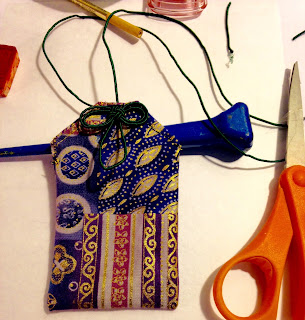 This is Kakizome Day; kakizome means "first writing". Today people all over Japan will take time to use a brush and sumi ink to write out a favorite quote or phrase - the first calligraphy of the new year. Kakizome is a way to express your positive wishes for the New Year.
This is Kakizome Day; kakizome means "first writing". Today people all over Japan will take time to use a brush and sumi ink to write out a favorite quote or phrase - the first calligraphy of the new year. Kakizome is a way to express your positive wishes for the New Year.Agenda:
- Show up to meeting and community events to witness.
- Share realities, and active hope solutions.
- Make and share craftivism to spread a message of earthcare.
Today I light a small white moon candle, and a blue candle for truth and witness, and ask the Spirits to bring the rain of loving care down upon the whole world.
 In Japan, calligraphy is part of the curriculum in all schools. On Kakizome Day, students begin the year by practicing their calligraphy skills - calligraphy is the normal handwriting in Japan, and your handwriting is thought to reveal your personality.
In Japan, calligraphy is part of the curriculum in all schools. On Kakizome Day, students begin the year by practicing their calligraphy skills - calligraphy is the normal handwriting in Japan, and your handwriting is thought to reveal your personality.These pictures are from a few year's ago, when my art students got a chance to practice Japanese calligraphy. You don't have to write in Japanese if that's intimidating.
 Supplies: Ink stone, ink stick, sumi brush, newsprint, rice paper
Supplies: Ink stone, ink stick, sumi brush, newsprint, rice paper
2- Grind your own ink (optional): Ink grinding gives you a meditative moment to reflect your thoughts and wishes for the new beginning of the year. Just add a few drops of water to the ink stone and slide the ink stick back and forth until a small amount of ink forms in the well. 3- Practice with the brush and ink: Japanese calligraphy requires skill- you have to hold the brush just so, and stroke and place the characters on the paper with precision and beauty. Try out the calligraphy on newsprint several times to get the feel for it before you use the rice paper. Practicing one positive kanji over and over helps you to develop skill and also focus on the positive theme you have selected.
3- Practice with the brush and ink: Japanese calligraphy requires skill- you have to hold the brush just so, and stroke and place the characters on the paper with precision and beauty. Try out the calligraphy on newsprint several times to get the feel for it before you use the rice paper. Practicing one positive kanji over and over helps you to develop skill and also focus on the positive theme you have selected.
4- If you end up with something you like, you can mount it on heavier paper and hang it to give you inspiration all year. Or you can make it small enough to fit inside an omamori.
 |
| Omamori from 2017 |
3- Turn the fabric inside out (front to front) and sew up the sides, but not the angled top. (The bottom is the fold line.) You can sew by hand or on a machine.
5- Now you are ready to write your sacred words. Omamori can have a general blessing and protection or it can have specific focus such as:
Gakugyou-joujo (education and passing tests) 学業乗除


I'm not sure what words are usually inside an omamori, so I just wrote the words of the purpose, which was traffic safety.
6- Once you write out your words, slide them inside. (I put mine in plastic first to protect from rain).
Then finish sewing up the angled edges and the top to totally encase your wish.
7- Omamori are hung by a cord tied with a special Japanese tassel knot. I found this great video tutorial showing how to tie it.

8- Once your knot it tied, poke a hole in the top of your omamori with an awl or something else that's poky.
 |
| Front |
 |
| Back |
My omamori was tied to my bike handlebars for many years, and was stollen this fall (along with my bike) so I made myself a new one today.
- 1-1/2 c. dried black-eyed peas
- 1 ham bone
- 2 stalks of celery
- 1 onion
- 1 green pepper
- 1 large carrot
- 1 jalapeno pepper, seeded
- 2 cloves of garlic
- 1-2 c. cooked ham, cubed
- 3 Tbsp. vegetable oil
- 1 bay leaf
- 2 tsp. fresh or dried thyme
- 1/2 tsp. crushed red chili pepper flakes
- salt to taste
- 6-10 leaves of kale, collards, or beet greens
2- Meanwhile, dice the celery, onion, green pepper, carrot and jalapeno. Mince the garlic. Stem and chop the greens. Cube the ham.
3- Heat oil in a heavy pot over medium-high heat. Add ham, diced vegetables (but not the greens), red chilies, thyme, and bay leaf and cook, stirring occasionally, until soft, about 8 minutes.








No comments:
Post a Comment